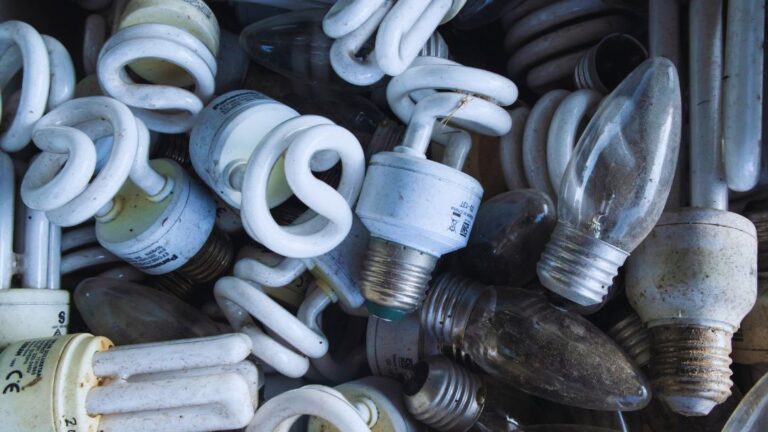HAZMAT Containers Storage: What You Need to Know for Safe Handling
- Jonathan R.
- August 7, 2024
Table of Contents
Storing hazardous materials is no joke. When you’re dealing with HAZMAT containers, the stakes are high, and the consequences of improper storage can be severe. From environmental hazards to serious health risks, the importance of storing these materials correctly cannot be overstated.
Whether you’re new to handling HAZMAT containers or just need a refresher, today we’ll walk you through the essential storage requirements and best practices to keep your facility safe and compliant. Let’s begin.
Understanding the Basics of HAZMAT Containers
When it comes to hazardous materials, choosing the right container is crucial. HAZMAT containers are specifically designed to store and transport dangerous substances safely. These containers must be durable, leak-proof, and resistant to the chemicals they hold. Different hazardous materials require different containers, so it’s important to know what you’re dealing with.
Before selecting a HAZMAT container, identify the specific type of hazardous material you need to store. This includes knowing its chemical properties, reactivity, and compatibility with other substances.
Proper labeling and documentation are also essential to ensure everyone handling the containers knows the risks involved. Once you have the right container, it’s time to think about where and how you’ll store it.
Location, Location, Location: Choosing the Right Storage Spot
The storage location for HAZMAT containers can significantly impact safety. Ideally, these containers should be stored in a dedicated, well-ventilated area away from general operations. This minimizes the risk of accidental exposure and ensures any leaks or spills are contained.
Ensure the storage area has appropriate safety equipment, such as fire extinguishers, spill kits, and personal protective equipment (PPE). The area should also have clear signage indicating the presence of hazardous materials and any associated hazards. Accessibility is another key factor; in an emergency, first responders must be able to quickly and safely reach the storage site.
Regular inspections of the storage area are crucial. Look for signs of wear and tear on containers, ensure proper ventilation, and verify that safety equipment is in working order. Keeping the area clean and organized can prevent accidents and make it easier to manage the materials.
Temperature and Climate Control: Keeping Your HAZMAT Safe
Temperature control is a vital aspect of HAZMAT storage. Some hazardous materials are sensitive to temperature fluctuations and can become unstable or even explosive under extreme conditions. To prevent dangerous reactions, it’s essential to store these materials within their recommended temperature ranges.
Climate control systems, such as heating, cooling, and ventilation, should be in place to maintain a stable environment for the HAZMAT containers. These systems must be regularly maintained and monitored to ensure they function correctly. Additionally, it’s essential to have backup power sources in case of a power outage, especially if your materials are susceptible to temperature changes.
Humidity control is also essential, as excess moisture can cause corrosion or damage to containers, leading to leaks or spills. Dehumidifiers or moisture barriers can help protect the containers and the materials they hold.
Handling and Moving HAZMAT Containers Safely
Handling HAZMAT containers requires specialized training and equipment. Employees should be trained in proper lifting techniques, the use of PPE, and emergency response procedures. Clear protocols for moving containers, whether manually or with equipment like forklifts or pallet jacks, are also important.
When moving HAZMAT containers, ensure they are securely fastened and stable to prevent tipping or falling. Use equipment designed for handling hazardous materials, such as explosion-proof forklifts or carts with containment features. Avoid rough handling, as this can damage containers and increase the risk of spills or leaks.
Following all relevant regulations and guidelines for transporting hazardous materials is critical. This includes proper labeling, documentation, and the use of approved transportation routes. Compliance with these regulations ensures safety and helps avoid costly fines and legal issues.
Regular Maintenance and Inspections: Keeping Standards High
Regular maintenance and inspections are crucial to ensuring the safe storage of HAZMAT containers. Develop a schedule for routine checks of both the containers and the storage area. This should include inspecting containers for signs of damage or wear, such as cracks, corrosion, or leaks.
To prevent accidents, storage areas should be kept clean and free of clutter. Check that all safety equipment is readily available and in good working condition. It’s also important to review and update safety protocols regularly to address any changes in regulations or best practices.
Training programs should be conducted periodically to ensure that all employees know the latest safety procedures and know how to handle HAZMAT containers correctly. Keeping detailed records of inspections, maintenance, and training can help track compliance and identify areas for improvement.
Safety Storage Inc.: Your Partner for Custom HAZMAT Solutions
At Safety Storage Inc., we understand the unique challenges of storing hazardous materials. With over 35 years of experience, we’ve become the industry leader in prefabricated and custom HAZMAT storage solutions. Our containers are designed to meet all environmental and safety regulations, providing you with peace of mind and the highest quality standards.
We offer fully customizable storage buildings tailored to your specific needs. Whether you’re a government agency, a municipality, or a manufacturing company, we have the expertise and products to ensure your hazardous materials are stored safely and efficiently.
From initial consultation to installation and beyond, we’re here to support you every step of the way. Contact us today to learn more about our customizable HAZMAT storage solutions and how we can help you maintain a safe and compliant storage environment.
Conclusion
Proper storage of HAZMAT containers is essential for safety, compliance, and environmental protection. By following the best practices we presented, you can minimize risks and ensure a safe working environment.
At Safety Storage Inc., we’re dedicated to providing top-notch HAZMAT storage solutions that meet all regulatory standards and exceed your expectations. Reach out to us today to discuss your HAZMAT storage needs and discover why we’re the industry leader in hazardous material storage.
Read More :
Hazardous Material Storage Containers

Jonathan Reed
Jonathan Reed specializes in writing in-depth, data-driven content on industrial waste management, regulatory compliance, and environmental sustainability. With expertise in hazardous waste disposal, OSHA guidelines, and waste reduction technologies, he provides actionable insights for businesses navigating complex waste management challenges.



